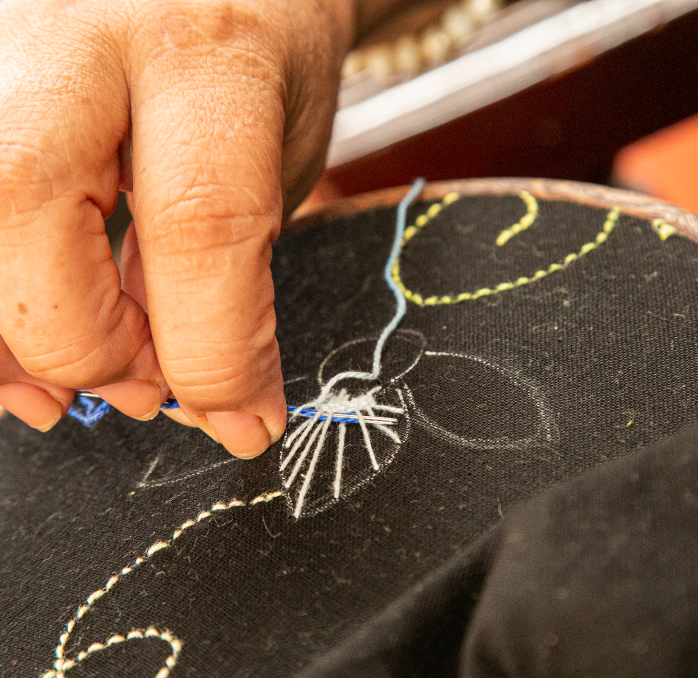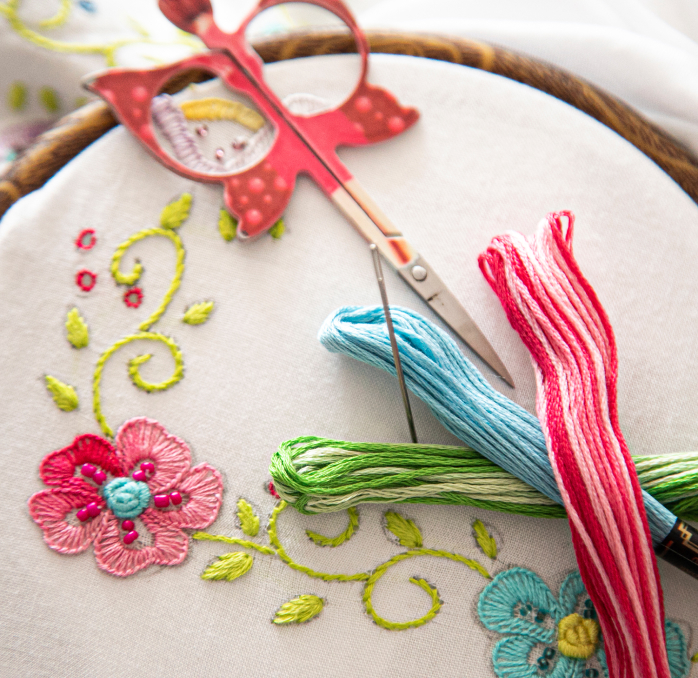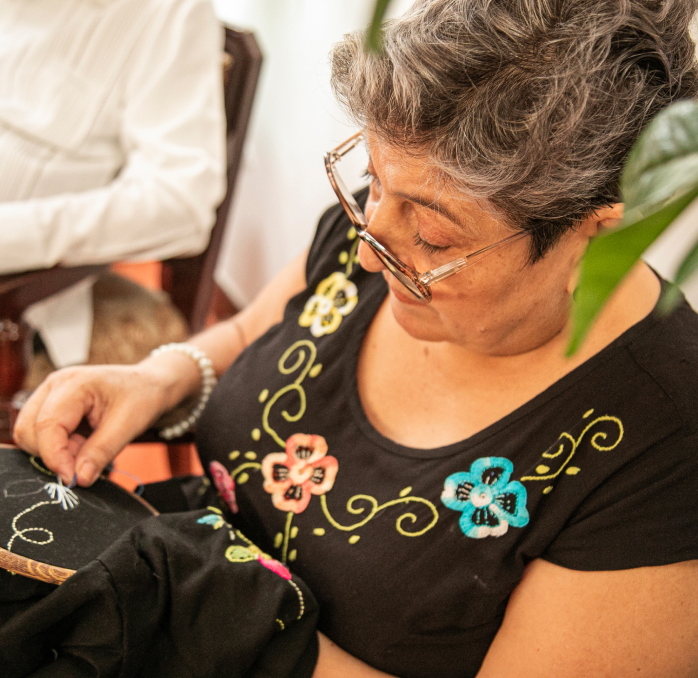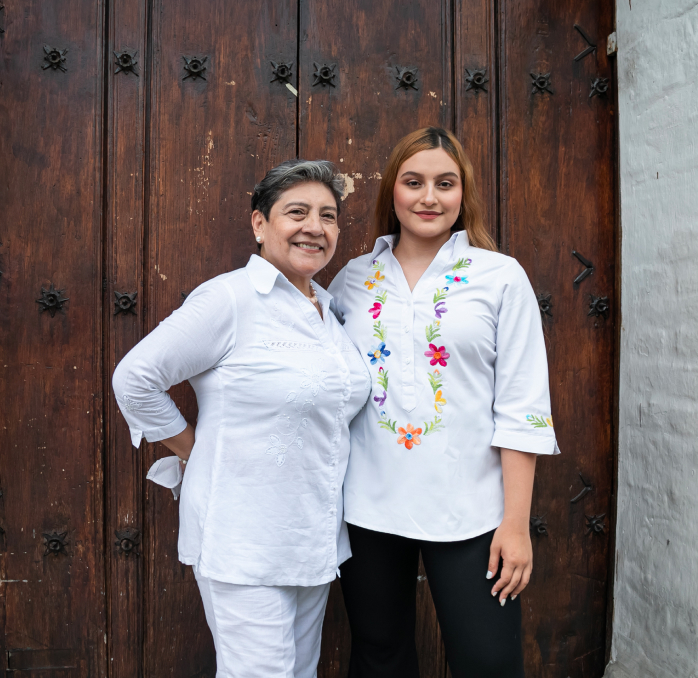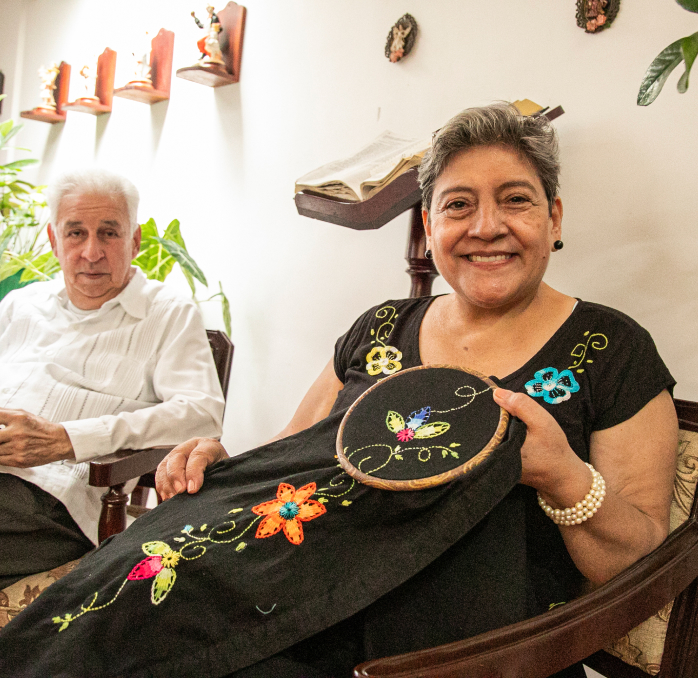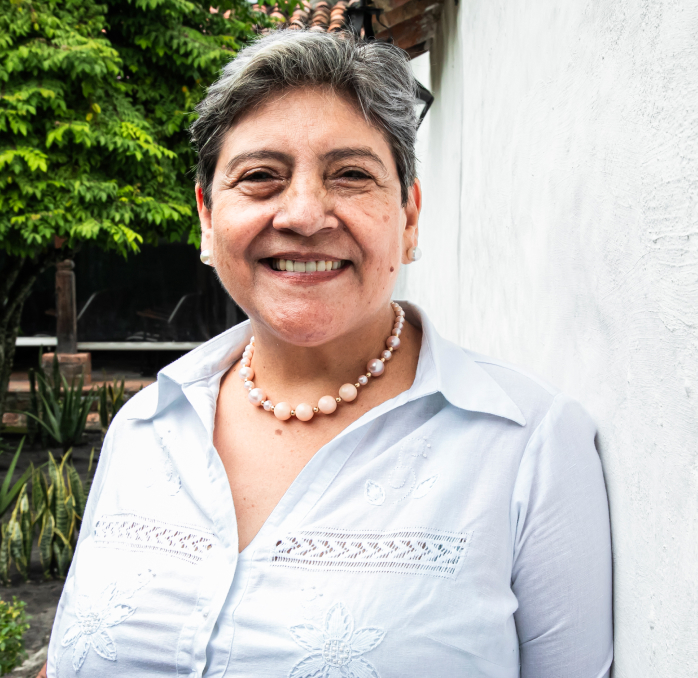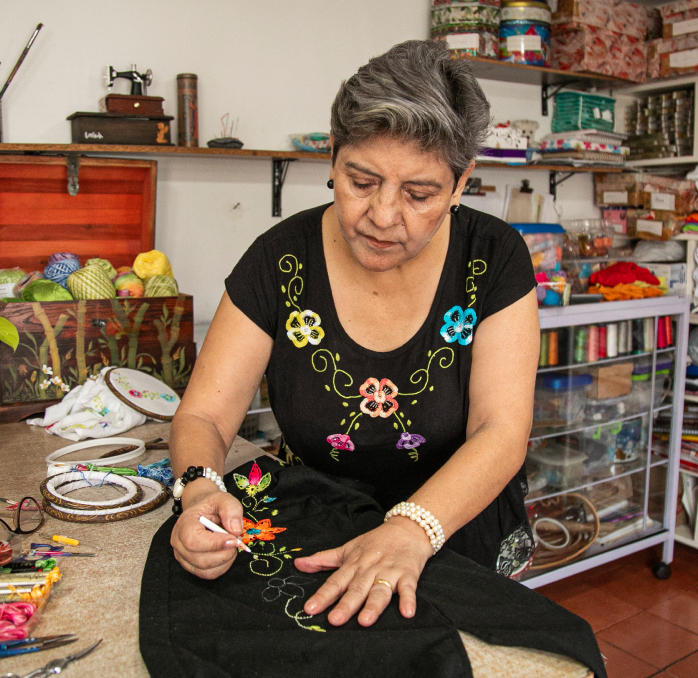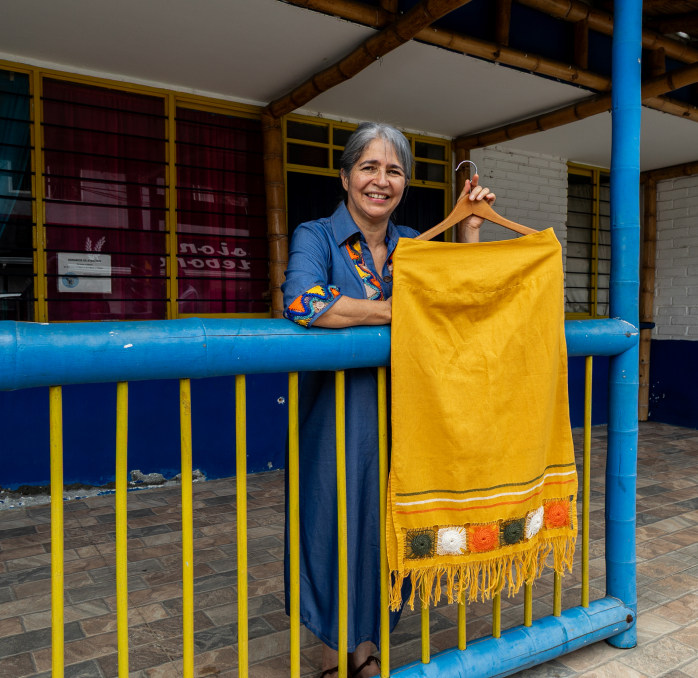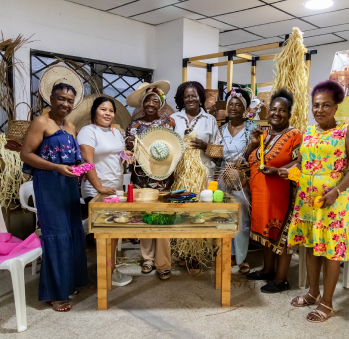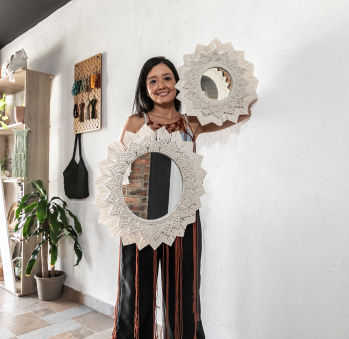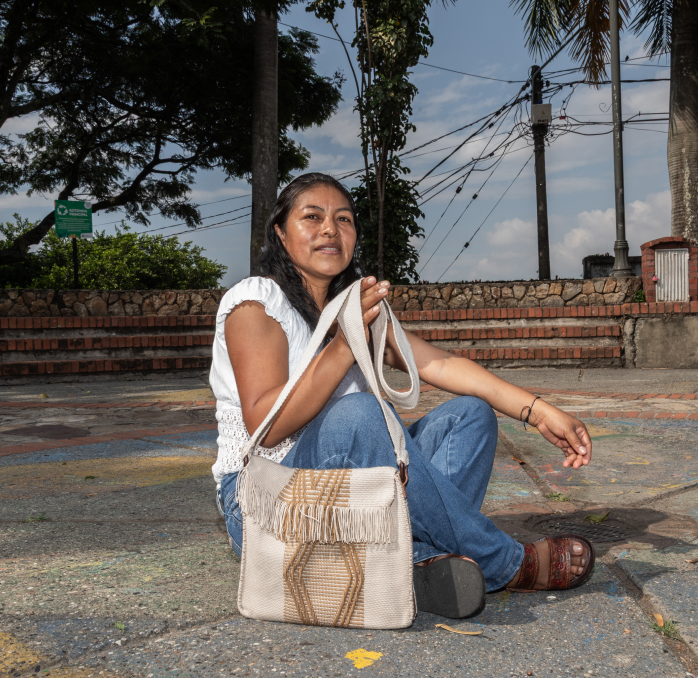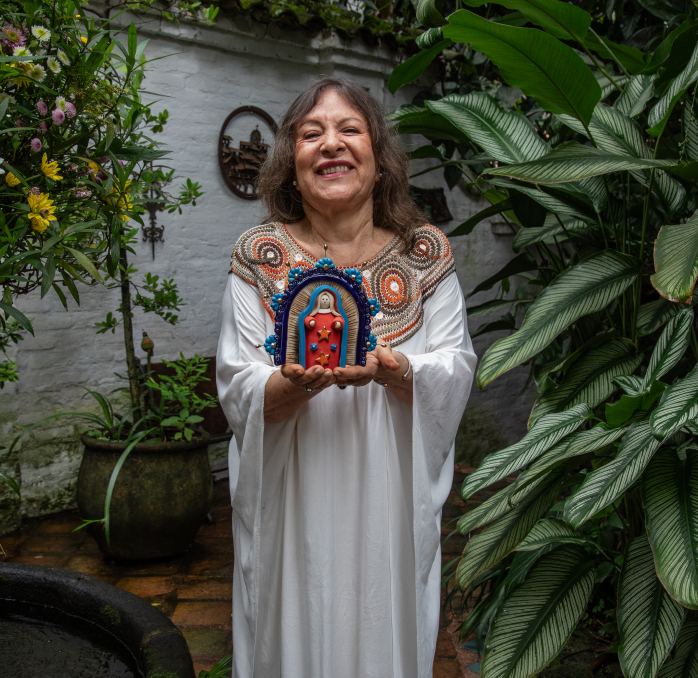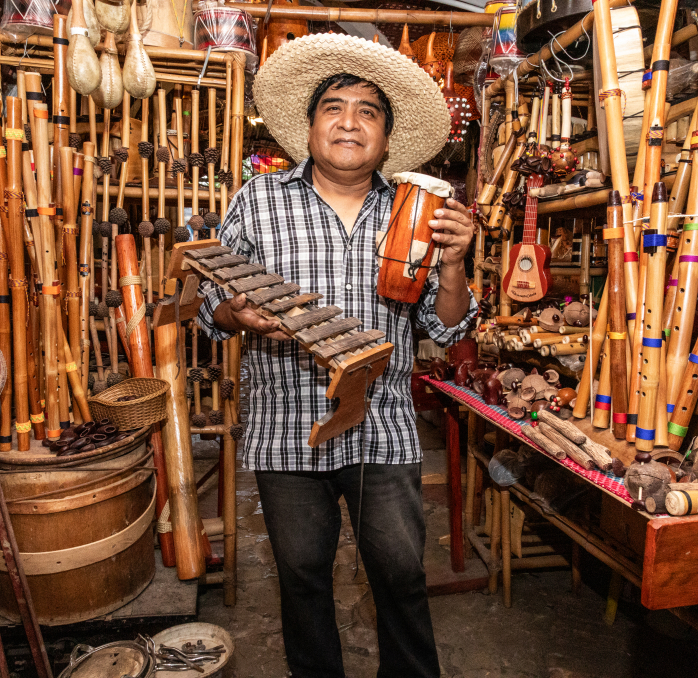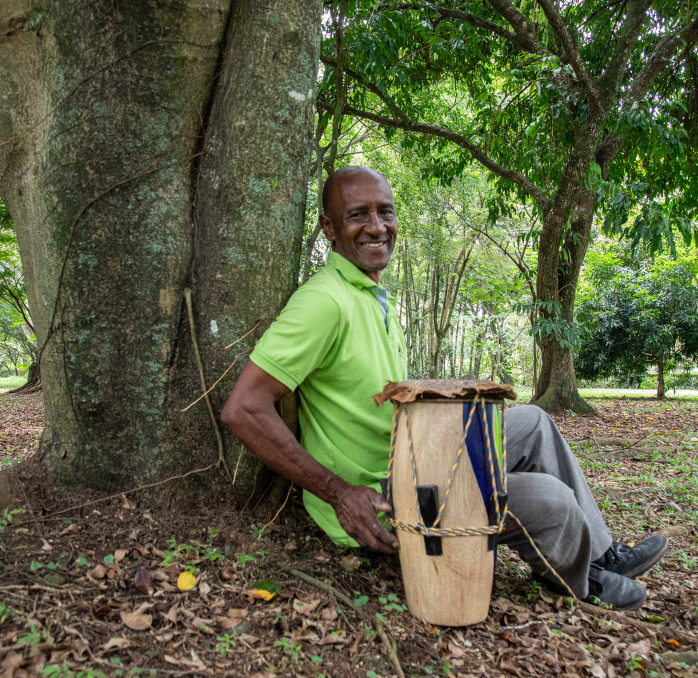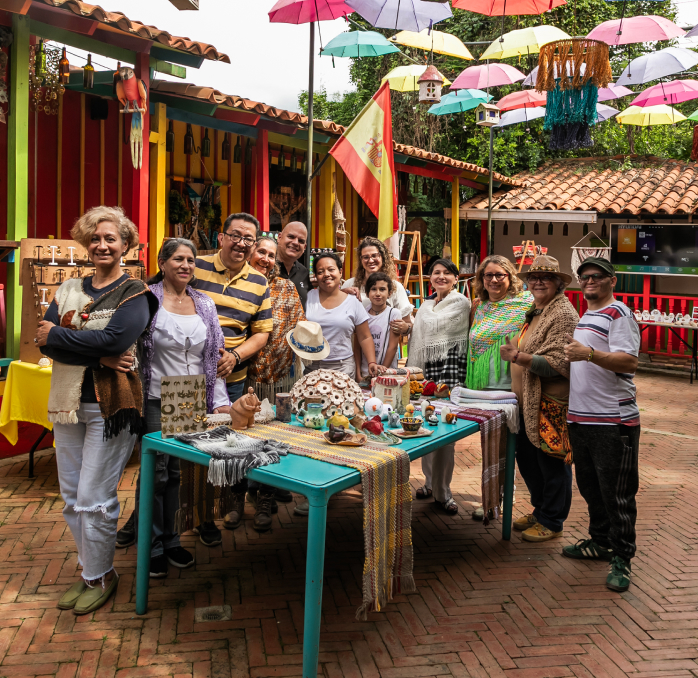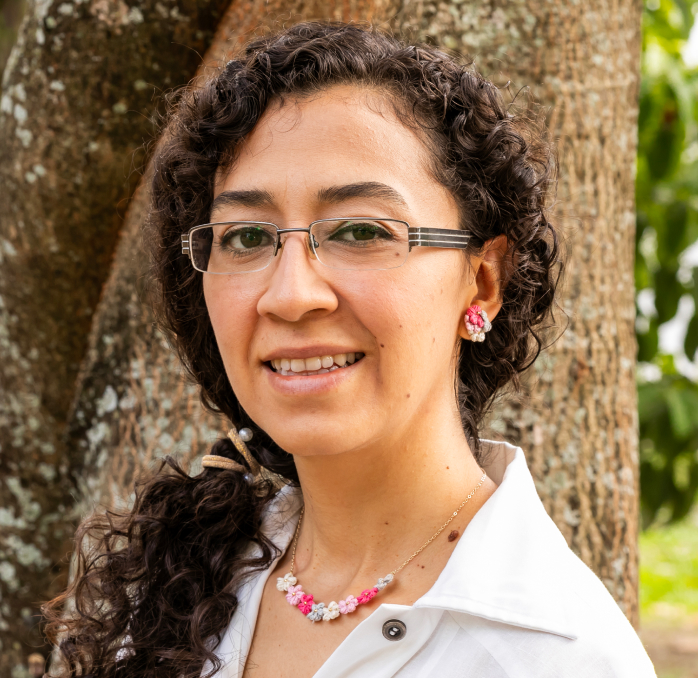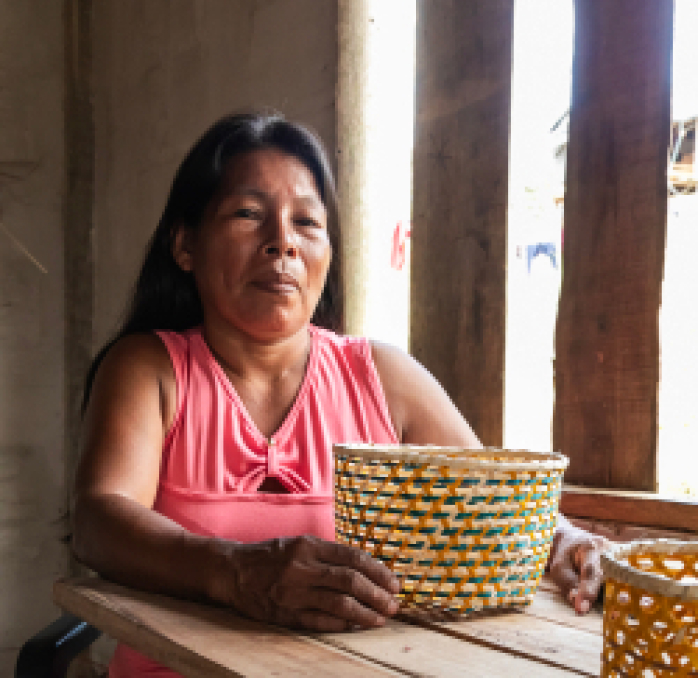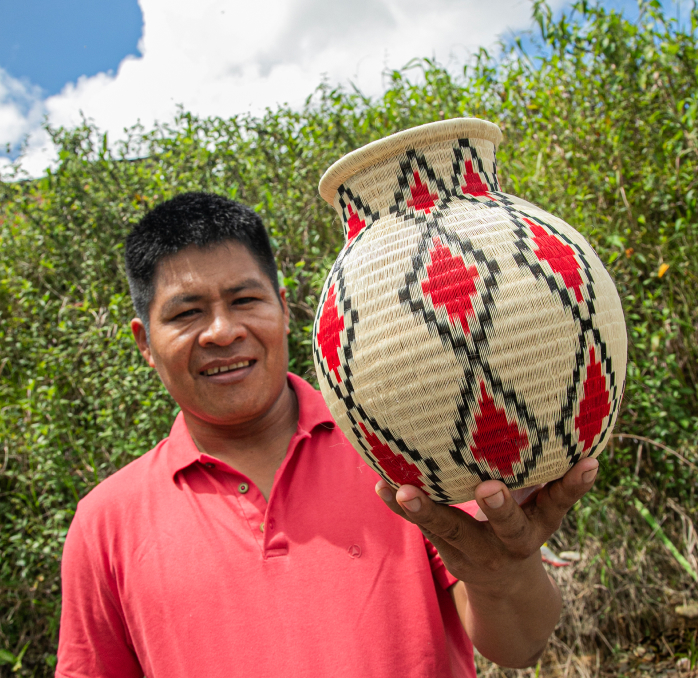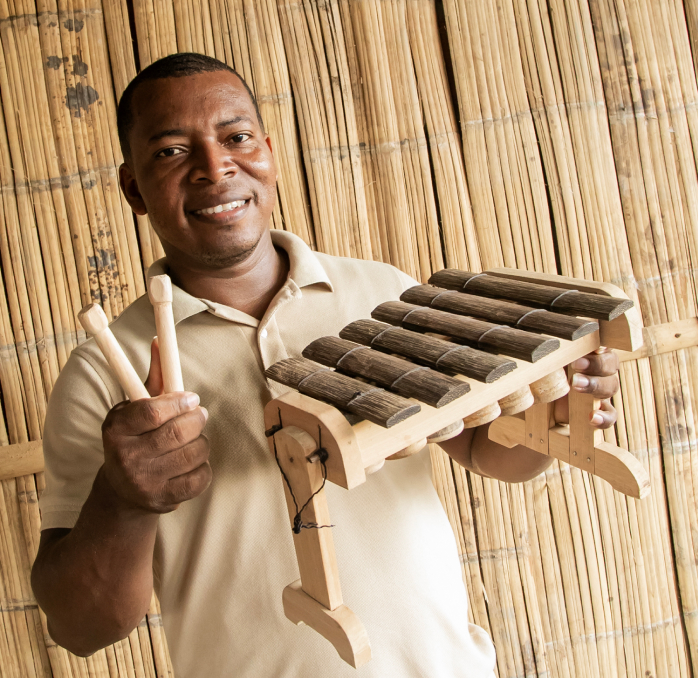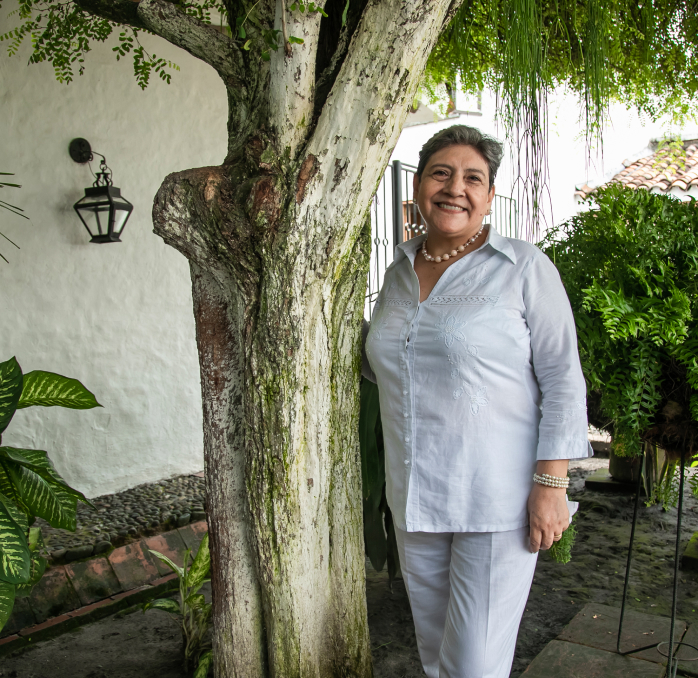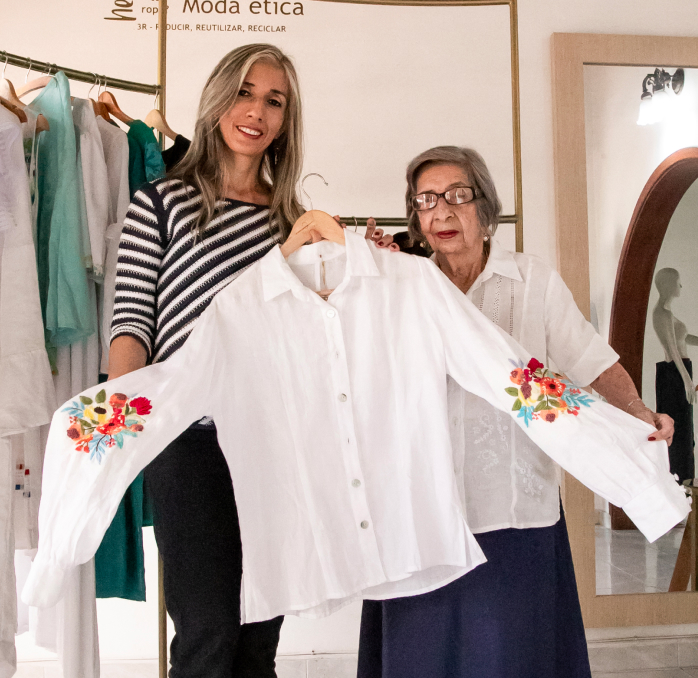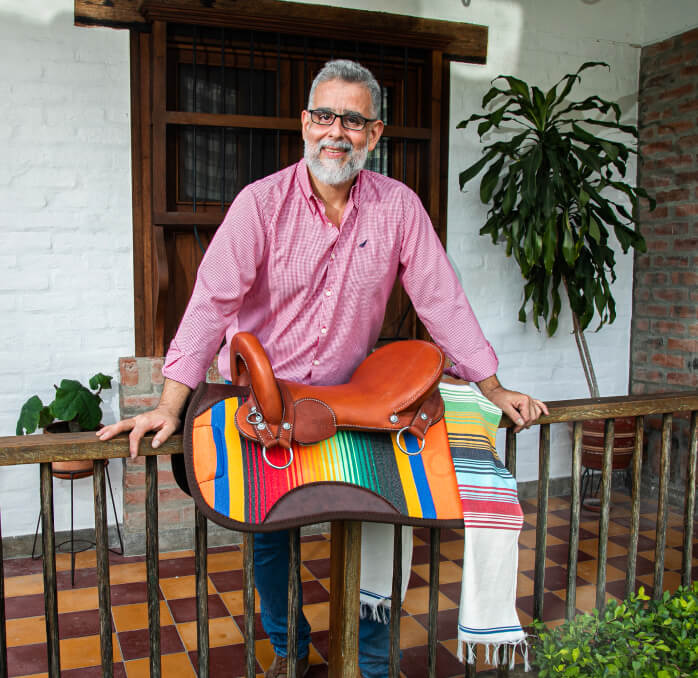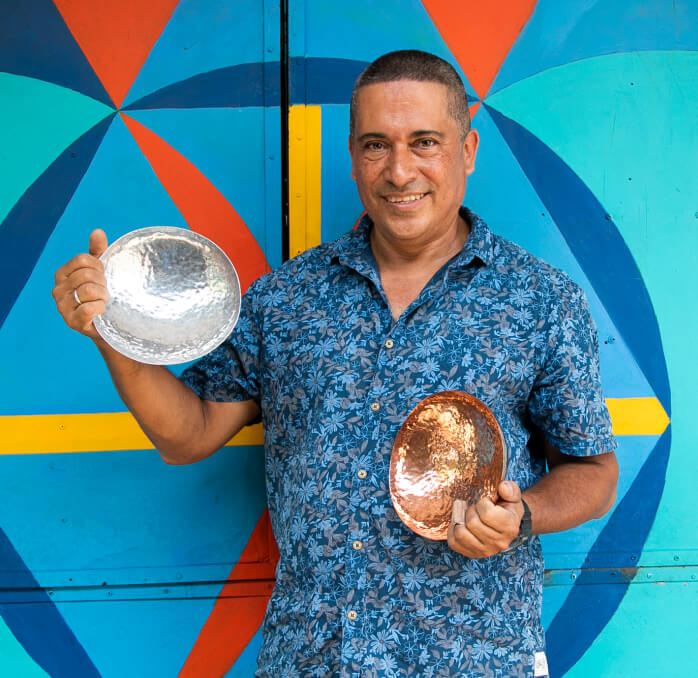Carmen Julia Alméciga
Workshop: Bordados a mano Julia Alméciga
Craft: Trabajos en tela
Trail: Valle del Cauca route
Location: Cartago, Valle del Cauca
It has been over two decades since Carmen Julia Alméciga arrived in Cartago, a town renowned for its embroidery artistry. Born in Bogotá, she had always held a fascination for this craft. On her visits to Cartago, she would bring back embroidered souvenirs. Thus, when she moved to the town with her husband, a Cartago native, and faced unemployment, she seized the opportunity to establish her own embroidery business.
Carmen Julia possessed prior knowledge of needlework from her schooling days. Upon collaborating with her fellow craftswomen and commencing her work, she continued to learn from them, since it was common for them to give feedback to each other about their technique. According to Carmen Julia, embroidery is a craft that offers a constant stream of learning opportunities due to the myriad stitches that can be combined in various ways. Moreover, a single stitch can go by multiple names. For instance, the cord embroidery technique is alternatively known as bies, patecabra, or Paris stitch. After several years working together, her peers have come to understand what Carmen Julia refers to as “”fresita,”” a stitch named by herself.
In Cartago, many craftswomen acquire their skills during childhood. Daughters often learn from their mothers, and in turn, assist their mothers—such as preparing threaded needles. Although Carmen Julia did not have children of her own, she has successfully imparted her craft to numerous girls and boys. During the vacations when her nephews and nieces were young, aged 6 to 12, she engaged them by providing threads, needles, and fabric. By drawing simple motifs on the fabric and guiding them on color choices, she enabled them to create embroidery projects they could gift to their mothers by the end of vacations. One of her nephews, now a veterinary doctor, still recalls her teachings while stitching up patients. Similarly, one of her nieces, now a mother herself, enjoys embellishing her daughter’s clothing with embroidery details.
Now that her nephews and nieces are all grown ups, Carmen Julia continues to teach embroidery at the cultural and artisanal space Asocuart, where she also operates a shop. At Asocuart, she welcomes children as young as eight who express interest in learning the craft. Alongside her partner Luz Estela Zapata, they instruct the young learners in threading needles and making rococó and cord stitches. The initial projects involve crafting small flowers and leaves. The group meets twice a week with the goal of each child creating their sampler, showcasing the stitches they’ve mastered.
From the outset, Carmen Julia aligned with experienced women who could teach her about stitches and dressmaking. Now, with her workshop celebrating its 22nd year, she continues to work closely with other women. Recognizing her business’s potential to contribute to Cartago’s economic growth—especially in light of local unemployment challenges—she has taken on senior women who are typically overlooked in formal employment. Offering them work they can perform from home, embroidery affords them the means to meet their household needs. Carmen Julia now collaborates with ten women, all heads of households, who play a fundamental role in her team’s success—a network she established through word of mouth.
Craft
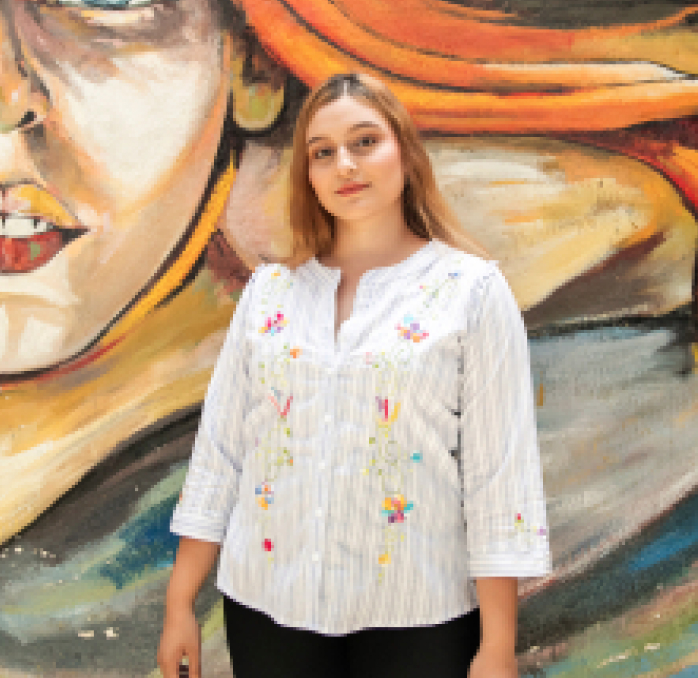


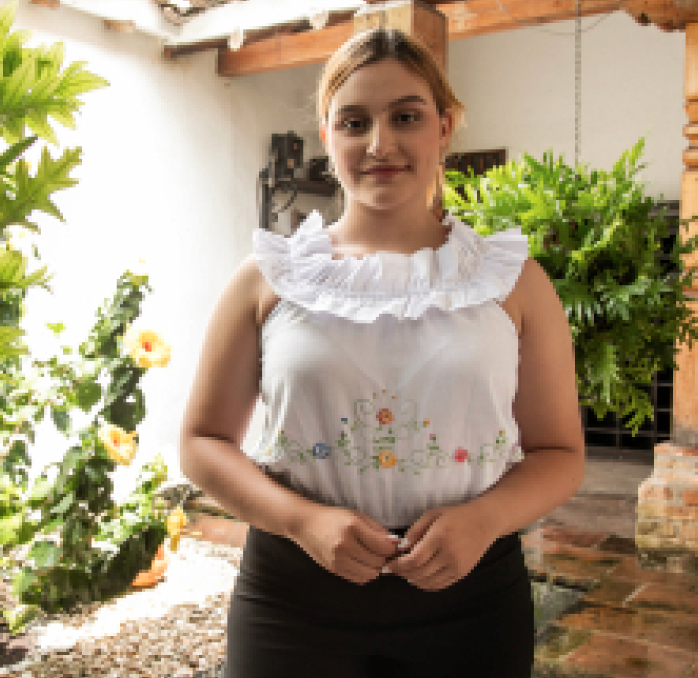
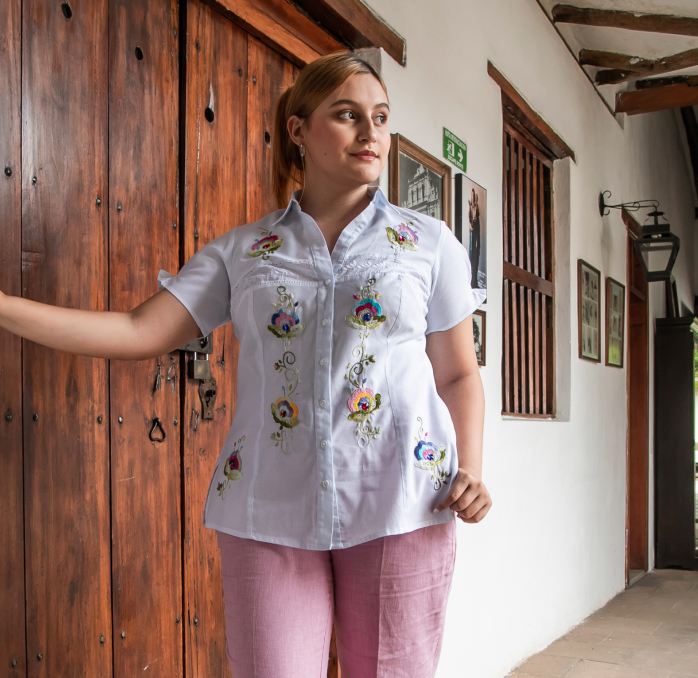
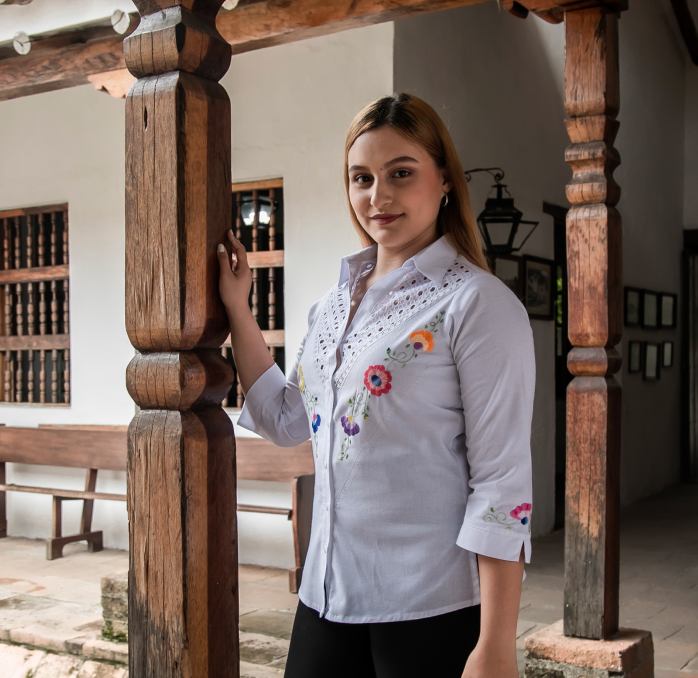
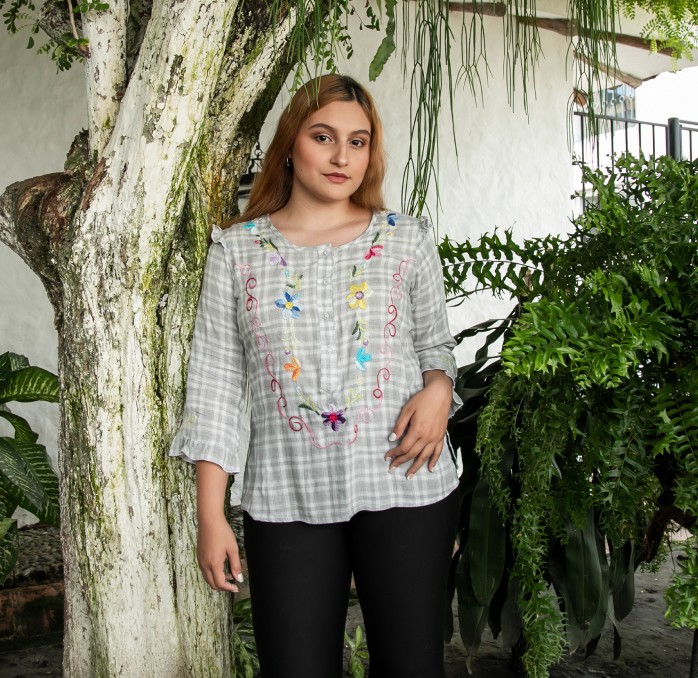









Artisans along the way
Artisans along the way
No puede copiar contenido de esta página








































